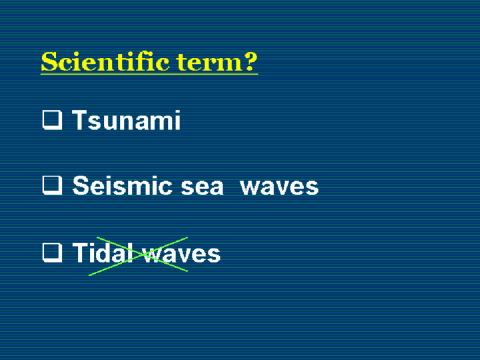| front |1 |2 |3 |4 |5 |6 |7 |8 |9 |10 |11 |12 |13 |14 |15 |16 |17 |18 |19 |20 |21 |22 |23 |24 |25 |26 |27 |28 |29 |30 |31 |32 |33 |34 |35 |36 |37 |38 |39 |40 |41 |42 |43 |44 |45 |46 |47 |48 |review |
 |
"The term tsunami (means
harbor wave in Japanese) was adopted for general use in 1963 by an
international scientific conference. In the past, the scientific community referred to tsunamis as "seismic sea waves". "Seismic" implies an earthquake-related mechanism of generation. Although tsunamis are usually generated by earthquakes, tsunamis are less commonly caused by landslides, infrequently by volcanic eruptions, and very rarely by a large meteorite impact in the ocean. In the past, tsunamis were often referred to as "tidal waves" by many English speaking people. The term "tidal wave" is a misnomer. Tides are the result of gravitational influences of the moon, sun, and planets. Tsunamis are not caused by the tides and are unrelated to the tides; although a tsunami striking a coastal area is influenced by the tide level at the time of impact. " Citation source: http://wcatwc.arh.noaa.gov/physics.htm |